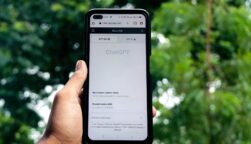Once again, OpenAI has broken the internet with an earth-shattering AI announcement – an AI video generator called Sora which can create eerily life-like videos. Some of the examples released already are hard to distinguish from real camera footage.
Sora is a diffusion model with transformer architecture, meaning its neural network functions in a similar way to ChatGPT. OpenAI has been tight-lipped on its official release date, but says that it wants to show people what’s “on the horizon” for artificial intelligence.
Here’s everything we know about Sora so far, and why the launch of the video generator to the general public might not be for some time yet.
What Is Sora?
Sora is a text-to-video AI model developed by ChatGPT creators OpenAI. “Text-to-video” means that Sora takes text prompts and turns them into short video clips. The batch released by OpenAI this week is truly breathtaking. Take a look at this completely AI-generated video of an Octopus:
A video produced by OpenAI’s new AI tool, Sora. Video: OpenAI
“Sora is able to generate complex scenes with multiple characters, specific types of motion, and accurate details of the subject and background,” OpenAI explains in a blog post published this week, within which more videos were released. “The model understands not only what the user has asked for in the prompt, but also how those things exist in the physical world.”
Who Can Access Sora Now?
Sora is currently being put through its paces by security researchers who are responsible for ensuring it’s safe and secure before it’s released to the public, and assessing “critical risks”.
However, OpenAI says that a small cohort of visual artists, filmmakers, and designers have been given access to Sora too. No artists or designers taking part in the trial are named.
Some in-the-know accounts on the OpenAI forum seem to signal that there will be a waiting list rolled out at some point, which will be the first chance to get your hands on it.
Unfortunately, there is no indication of when we’ll be able to sign up to use Sora.
 🔎 Want to browse the web privately? 🌎 Or appear as if you're in another country?
🔎 Want to browse the web privately? 🌎 Or appear as if you're in another country?
Get a huge 86% off Surfshark with this special tech.co offer.![]()
When Will Sora Be Available to the Public?
Sadly, there is currently no release date for Sora. All the content that’s been going viral on the internet over the past 24 hours has come out of the announcement blog post published by OpenAI.
Interestingly, it doesn’t seem like OpenAI has even given a vague indication of when it might be made generally available – there’s not even been an indication that it will be released this year.
That’s quite unusual for such a large announcement, and could suggest it’s a long way off public release – but then again, OpenAI does admit that it’s sharing its research early. With the speed that the artificial intelligence industry has moved over the past two years, the true launch date is anyone’s guess.
What’s the Hold Up with Sora?
As we’ve covered, OpenAI is not prepared to release Sora to the public yet, unsatisfied that the video-generating technology has been sufficiently safety tested. This is good, considering the myriad of ethical issues relating to the creation of such lifelike videos – not to mention during a year with so many elections.
“We’ll be taking several important safety steps ahead of making Sora available in OpenAI’s products” “We are working with red teamers – domain experts in areas like misinformation, hateful content, and bias - who will be adversarially testing the model” it added.
OpenAI also says it is working on an AI video detection classifier that can identify whether a video has been produced by Sora or not.
This seems like a similar step to the one that was taken after ChatGPT was launched, after which the AI company launched a text classifier. However, it was later shut down due to its unreliability. When we tested it to see if it could uncover ChatGPT Plagiarism, it was unable to even detect content generated by itself.
How Does Sora Work?
“Sora is a diffusion model which generates a video by starting off with one that looks like static noise and gradually transforms it by removing the noise over many steps,” OpenAI said this week.
The technology works similarly to the GPT family of language models that power the company’s chatbot, ChatGPT. They all use a “transformer” architecture – a type of neural network that takes inputs and “transforms” them into outputs. They’ve also incorporated elements of DALLE-3, such as the recaptioning system.
OpenAI has fed Sora videos and images as units of data – or “patches”. “By unifying how we represent data” OpenAI days, “we can train diffusion transformers on a wider range of visual data than was possible before, spanning different durations, resolutions, and aspect ratios.
You can read a little bit more about how OpenAI’s AI video generation technology works in this blog post located in the company’s research portal.




